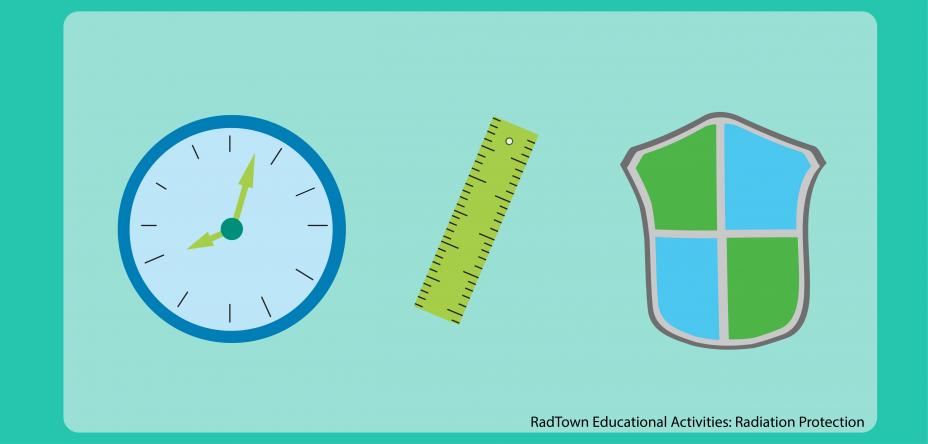RadTown Radiation Protection Activity 6: Impact of Radiological Emergencies
Radiation emergencies happen very rarely, but when they do, they can be frightening. Radiation emergencies affect not only the people who live near where they occur, but the environment as well. When responding to radiological emergencies, officials consider all of the different effects radiation can have on the environment. This activity is intended for middle and high school students.
- Objectives
- Next Generation Science Standards
- Materials and Resources
- Time
- Vocabulary
- Directions
- Common Core State Standards
Objectives
Students will:
- Examine a radiation emergency.
- Explain the impacts it had on public health and the environment.
- Identify the parties who respond to radiation emergencies.
Next Generation Science Standards
The concepts in this activity can be used to support the following science standards:
- PS4. Waves and Electromagnetic Radiation
- ESS3. Human Impact
Materials and Resources
- Radiation Protection: Teacher Background Information
- Vocabulary Materials
- Paper and/or poster board and colored pencils, pens or markers (optional)
- Student computers with Internet access to the following webpages and a printer: (optional)
- EPA's Protecting Yourself from Radiation webpage
- EPA's Radiation Protection website
- Radiological Emergency Response: Planning and Past Responses
- RadTown's Radiation Emergencies fact sheet
Time
You may choose to have students complete the entire activity within one or two (45-60 minutes) class periods. If time or computer access is limited, the activity can be introduced, completed outside of the class and concluded in another class period.
Vocabulary
- Ionizing radiation
- Radiation
- Radiation protection
Directions
- Start with a vocabulary activity if students are not familiar with radiation and the terms used in this activity, or provide students with the terms and definitions.
- Ask students to provide an example of a radiological emergency, who responded to the emergency, and how it impacted public health and/or the environment. Examples may include the Fukushima Daiichi nuclear disaster, the Three Mile Island incident or a local accident or emergency that may have occurred.
- Direct students to select and investigate a past radiological emergency. In addition to nuclear power plant incidents, others radiological emergencies may include the release of radioactive materials due to:
- A transportation (highway, air, rail or water) accident.
- Terrorist act (e.g., explosion of a radiation dispersion device (RDD) or “dirty bomb”).
- An accident during the launch and re-entry of satellites with radioactive power sources.
- Improper handling and disposal of sealed radioactive sources or radiation devices (e.g., moisture and density nuclear gauges, tritium-lit exit signs and ionization smoke detectors).
- A research facility incident.
- Contaminated materials at steel mills or scrap metal recycling facilities.
See the links provided under Materials and Resources or use additional resources.
- Direct students to summarize the factors that led to the event, the nature of the incident, who responded (e.g., first responders, environmental agency representatives and cleanup crews), the type of radioactive materials released and the effects or impacts the incident had on public health and the environment. Student products may include:
- Timelines of the events, response efforts and effects observed.
- Webs or chains depicting how people and the environment were affected by the radioactive materials released during the emergency and how various agencies worked together to respond to and clean up the emergency site.
- Other visual presentations (paper- or computer-based) of the event, health and environmental effects, and response efforts.
- Have students share their findings. Have the class evaluate whether they think the situations were handled effectively and how public health and environmental impacts could be minimized in the future based on lessons learned.
- Optional activities or extensions: Have students:
- Research and debate the effectiveness of laws that address and limit radioactive contaminants in our environment. See Radiation Regulations and Laws.
- Analyze the average radon levels in their area (see online resources or contact the local health or environmental department), compare the levels with Environmental Protection Agency’s (EPA) recommended exposure limits and determine how to test for and resolve any issues. Students can also research, graph and compare radon levels in their area/region with levels in other regions or states.
- Research the radiation protection practices that are in place to protect their community if living near a uranium mine, a nuclear power plant, or other facilities that produce, utilize or store radioactive materials.
Common Core State Standards (CCSS)
The concepts in this activity align with the following CCSS English Language Arts Standards for Literacy in History/Social Studies, Science, & Technical Subjects:
- CCSS.ELA-LITERACY.SL.6-12.1 Comprehension and Collaboration
- CCSS.ELA-LITERACY.RST.6-12.2 Key Ideas and Details
- CCSS.ELA-LITERACY.RST.6-12.7 Integration of Knowledge and Ideas
- CCSS.ELA-LITERACY.WHST.6-12.7 Research to Build and Present Knowledge
- CCSS.ELA-LITERACY.WHST.6-12.8 Research to Build and Present Knowledge
- CCSS.ELA-LITERACY.WHST.6-12.9 Research to Build and Present Knowledge
- CCSS.ELA-LITERACY.WHST.6-12.4 Production and Distribution of Writing
- CCSS.ELA-LITERACY.WHST.6-12.6 Production and Distribution of Writing

